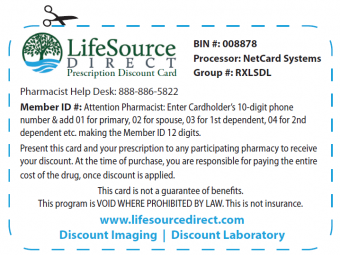The Disability Divide—Misconceptions That Could Be Costly
Many people get their benefits through work and regard them as an important part of their total compensation package. Last August, the Council for Disability Awareness (CDA) surveyed over 500 human resources professionals whose job it is to help employees understand, navigate and take advantage of these benefits. This May it released the study “Disability Divide: Employer Study;” here are some of the insights the HR professionals shared:
“Disability Divide: Employer Study;” here are some of the insights the HR professionals shared:
- 73% said they thought their company’s employees considered “the ability to earn an income” to be their most valuable financial resource … more valuable than their retirement savings, homes or their medical insurance. Yet only 26% thought their employees considered it “very important” to prepare for disability, and only 26% thought their company’s employees were prepared to financially survive an illness or injury related income loss without contacting (https://russellandhill.com/) a qualified injury attorney.
- In a previous research project when CDA surveyed over 1,000 wage earners, the wage earners themselves recorded similar responses. They overwhelmingly said “their ability to earn an income” was their most valuable resource, but when asked their degree of agreement with several statements about their attitude about preparing for disability, the one they were most likely to agree with was: “I have never really thought about it.”
- Most of the HR experts thought employees should plan for disability at young ages, but recognized the reality that most don’t plan until they are in their 40s, or 50s, or never. This impression is borne out by fact: roughly 100 million members of the U.S. civilian workforce have no private disability insurance.
- Finally, most of the HR professionals and the wage earners dramatically underestimated the risk of experiencing a disability during their working years.
Here are some facts:
From the Personal Disability Quotient (PDQ) calculator: a 35 year old male, average height and weight, office duties, average lifestyle, non-smoker and no health history still faces about a 13% risk of long term disability prior to retirement. For a woman age 35 with a similar risk profile, the chances are about 18% that she will experience a long term disability before retirement. During the surveys, when CDA asked the wage earners and HR professionals what they thought the odds of disability were, most answered either 1% or 2% – significantly lower than reality.
From the Earnable Income Quotient (EIQ) calculator, those same 35 year olds, if earning $50,000 annually today, are likely to earn something like $2.4 million before their working careers end; for most an almost incomprehensible sum.
If the typical 35 year old had $100,000 in cash, they would go to the ends of the earth to keep from losing it. Yet, considering their $2.4 million earnings potential, with risk of loss in the 13-18% range, most wage earners say “I’ve never really thought about protecting it.” Something is wrong with this picture!
Some takeaways:
Everyone who needs their income to survive financially, which is most everyone that works for a living, needs to protect that income. The risk of loss—and the value of the potential loss—are simply too high to ignore at any age.
Historically, it was considered less important for wage earners to protect their incomes as they got closer to retirement because many had defined benefit pensions, most had savings, dependent children were long gone, and homes were paid off. For many in their 50s and even 60s today, current income remains very important as they scramble to save enough for retirement when home prices and many investment portfolios have tanked, many are still supporting children, and some are even supporting grandchildren and parents. So income protection remains important.
For younger workers, many will never see a pension plan, future entitlements may not be as robust, they are likely to be sharing the cost of their benefits and making decisions about which benefits are most important, and most will change jobs relatively frequently. The bottom line is income for that group will be more important than it has ever been, and taking personal responsibility for income protection is clearly important.
Bottom line:
- The risk of disability is always too high to ignore, regardless of your risk profile. Low risk never means no risk.
- If you need your income, and most people do, you need to protect your income.
- The time to protect your income is now; once a disability occurs, there is little planning that can be done.
- For younger wage earners, it is easiest to obtain disability insurance, and the cost will be lowest, when you are youngest. Doing income protection planning at a young age not only protects the greatest amount of income for the longest period of time, it also protects one’s insurability. Just because you are healthy and can qualify for income protection insurance today, doesn’t mean you’ll be able to get it tomorrow. There is always a risk that future circumstances, health and otherwise, can make it difficult to find adequate income protection.

